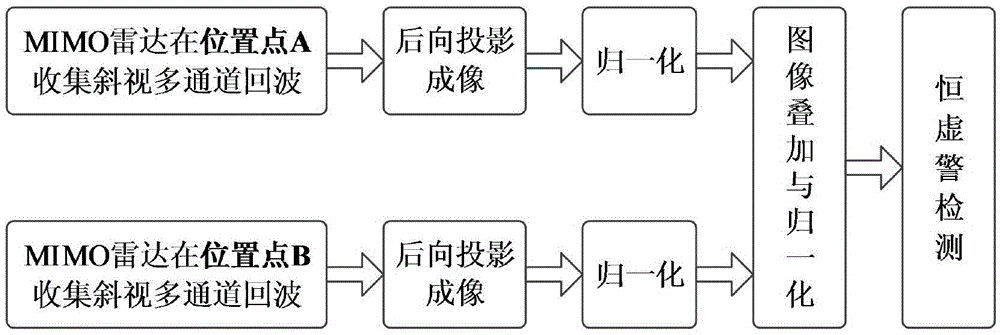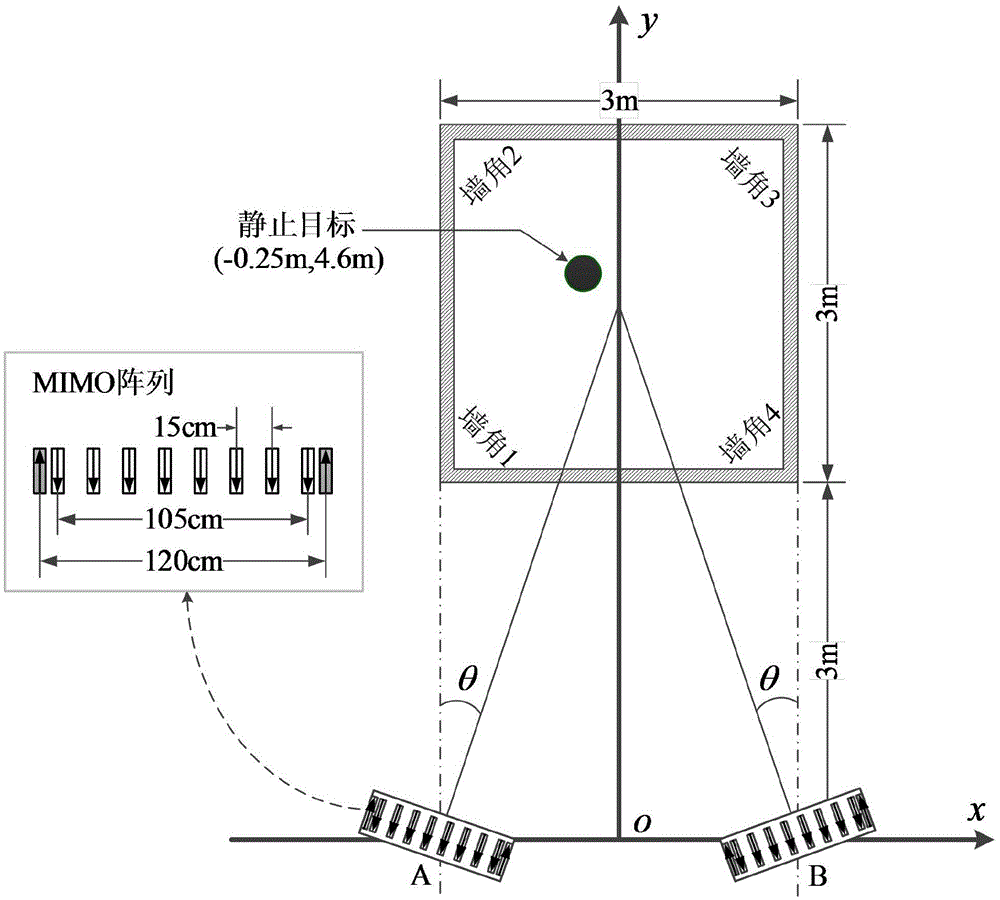MIMO through-wall radar based single-side double-point squint imaging method of building
A technology of through-wall radar and imaging method, which is applied in the direction of radio wave reflection/re-radiation, utilization of re-radiation, measurement devices, etc., and can solve problems such as performance degradation, low realizability, and harsh detection environment
- Summary
- Abstract
- Description
- Claims
- Application Information
AI Technical Summary
Problems solved by technology
Method used
Image
Examples
Embodiment 1
[0048] Embodiment 1: see Figure 1 to Figure 9 , set in the electromagnetic simulation software CST such as image 3 In the simulation scenario shown, the MIMO through-the-wall radar is a radar with two transmissions and eight receptions, that is, the MIMO array is composed of two transmitting antennas and eight receiving antennas, a total of sixteen transmitting and receiving channels, and two transmitting antennas At both ends of the array, eight receiving antennas are evenly distributed in the middle of the array. The distance between adjacent transmitting and receiving antennas is 7.5cm, and the distance between adjacent receiving antennas is 15cm; the wall thickness of a square building is 10cm, and the relative dielectric constant is 6. The length of the single side wall is 3m, simulate a small ball at the position inside (-0.25m, 4.6m) as the static target; on the parallel line 3m away from the single side wall of the building, respectively select two detection position...
PUM
 Login to View More
Login to View More Abstract
Description
Claims
Application Information
 Login to View More
Login to View More - R&D
- Intellectual Property
- Life Sciences
- Materials
- Tech Scout
- Unparalleled Data Quality
- Higher Quality Content
- 60% Fewer Hallucinations
Browse by: Latest US Patents, China's latest patents, Technical Efficacy Thesaurus, Application Domain, Technology Topic, Popular Technical Reports.
© 2025 PatSnap. All rights reserved.Legal|Privacy policy|Modern Slavery Act Transparency Statement|Sitemap|About US| Contact US: help@patsnap.com



